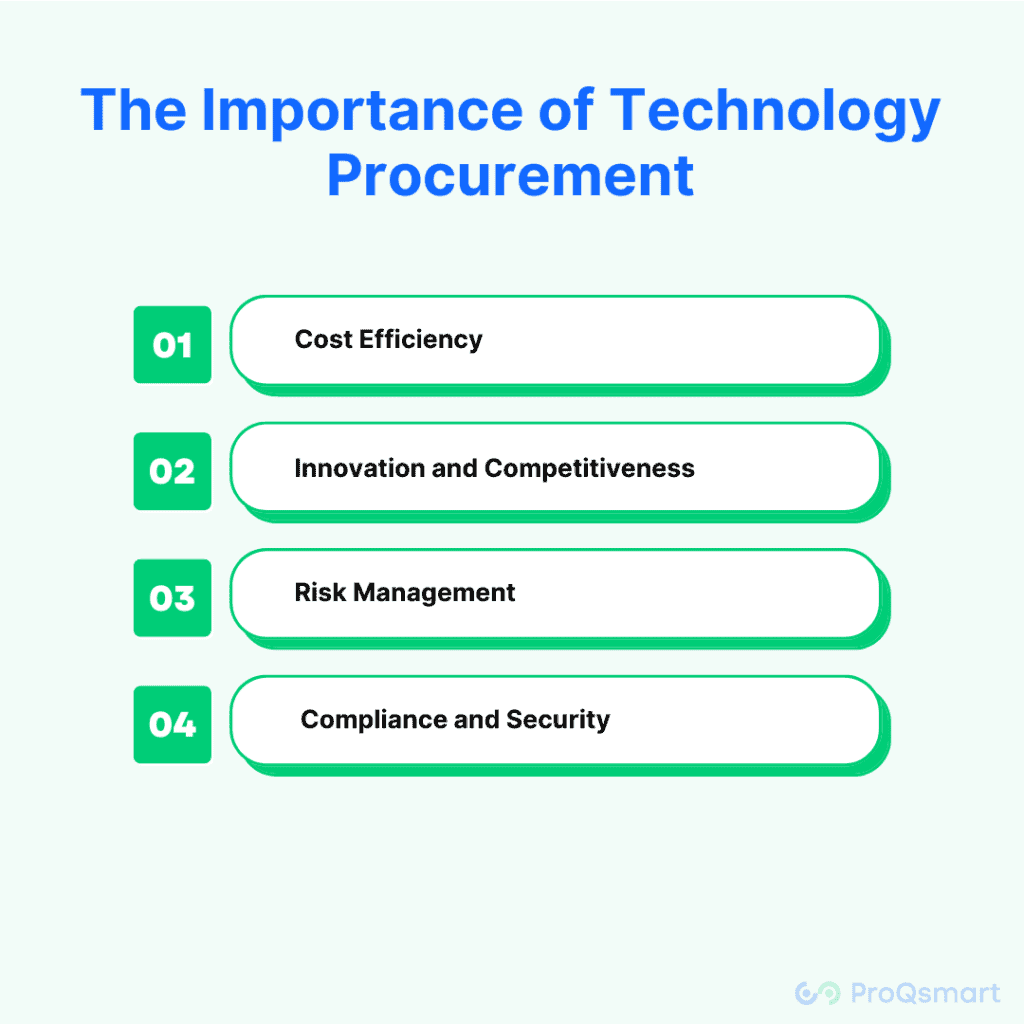In the digital age, technology procurement has become a cornerstone for businesses looking to stay competitive and innovative. This blog post delves into what it entails, its strategic importance, and how businesses can leverage it to enhance their technological capabilities and overall performance.
What is Technology Procurement?
Technology procurement is the process of sourcing, acquiring, and managing technology resources that organizations need to carry out their operations effectively. This encompasses everything from hardware and software to cloud services and technology infrastructure. The goal of technology procurement is not only to acquire these technologies but also to do so in a way that aligns with the company’s strategic goals and delivers the best possible value.
The Importance of Technology Procurement

These are the crucial for several reasons:
Cost Efficiency
Proper technology procurement helps organizations minimize costs while maximizing the value and utility of their technology investments.
Innovation and Competitiveness
Access to the latest technology can provide businesses with a competitive edge, enabling innovation and improving service delivery.
Risk Management
Effective procurement strategies help mitigate risks associated with investing in new technologies, such as compatibility issues, obsolescence, and vendor lock-in.
Compliance and Security
Ensuring that technology acquisitions comply with relevant laws and regulations and meet the organization’s security standards.
Key Components of Effective Technology Procurement
Needs Assessment: Determining what technology solutions are necessary to meet organizational goals.
Supplier Evaluation: Assessing potential technology vendors on criteria such as reliability, support, compatibility, and future-proofing.
Contract Negotiation: Securing favorable terms that protect the organization’s interests and ensure vendor accountability.
Lifecycle Management: Managing technology from procurement through to disposal, ensuring it remains efficient, up-to-date, and secure throughout its lifecycle.
Implementing a Successful Technology Procurement Strategy
To implement an effectively this strategy, consider the following steps:
Align with Strategic Goals: Ensure technology acquisitions support the broader strategic objectives of the organization.
Stay Informed on Trends: Keep up with technology trends to anticipate changes that could affect your business.
Involve Stakeholders: Include input from all departments that will use the technology to ensure the solutions meet their needs.
Focus on Total Cost of Ownership (TCO): Consider all costs associated with the technology, including purchase, implementation, maintenance, and training.
How Learn Contract Lifecycle Management Helps Business
Conclusion
Technology procurement is a dynamic and strategic function essential to modern business operations. By understanding and effectively managing this process, organizations can ensure they harness the full potential of technology to drive growth, enhance efficiency, and maintain a competitive edge in the market. As technology continues to evolve, so too should the strategies companies use to procure and manage it, ensuring they remain at the forefront of innovation and operational excellence.


